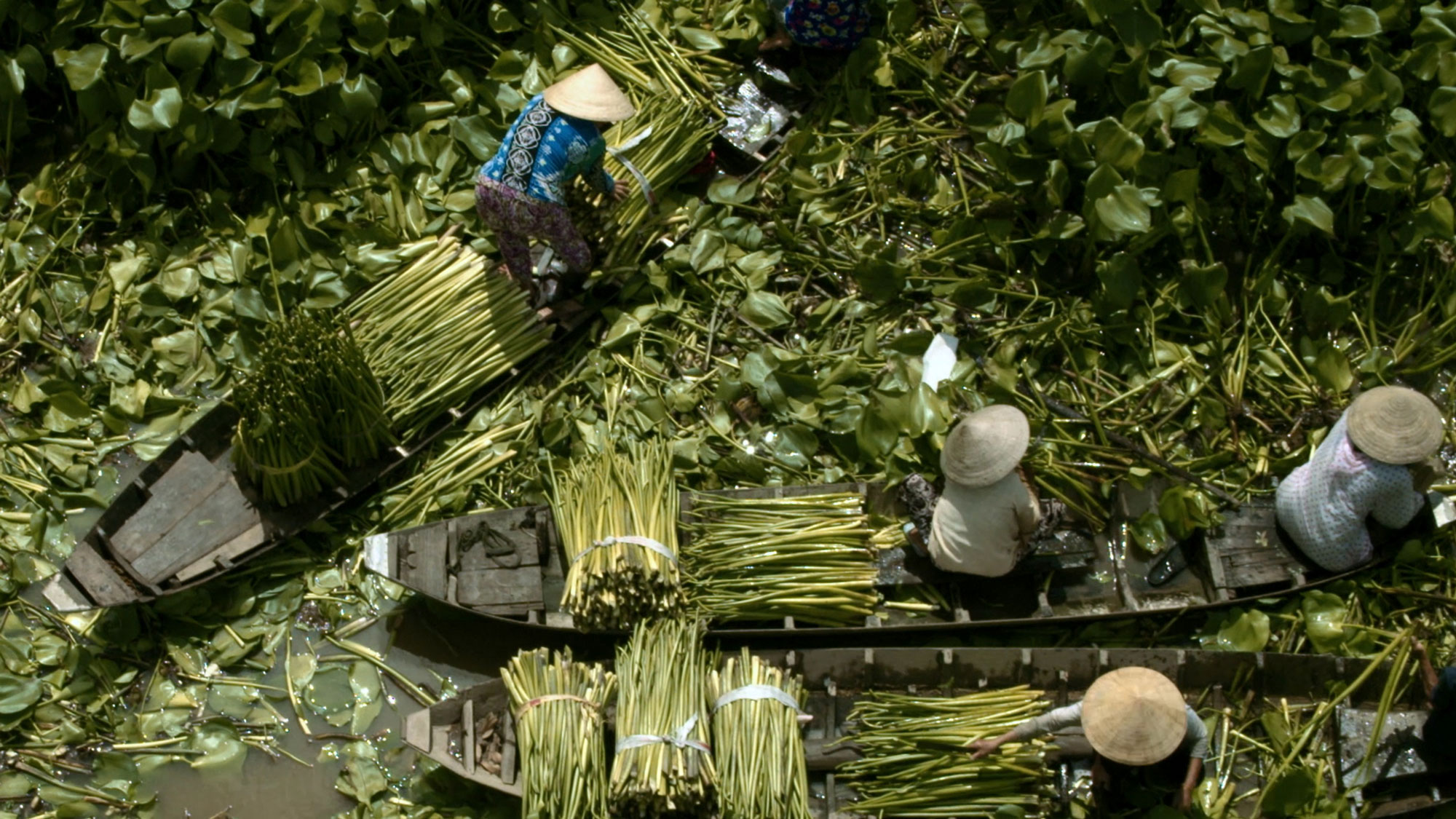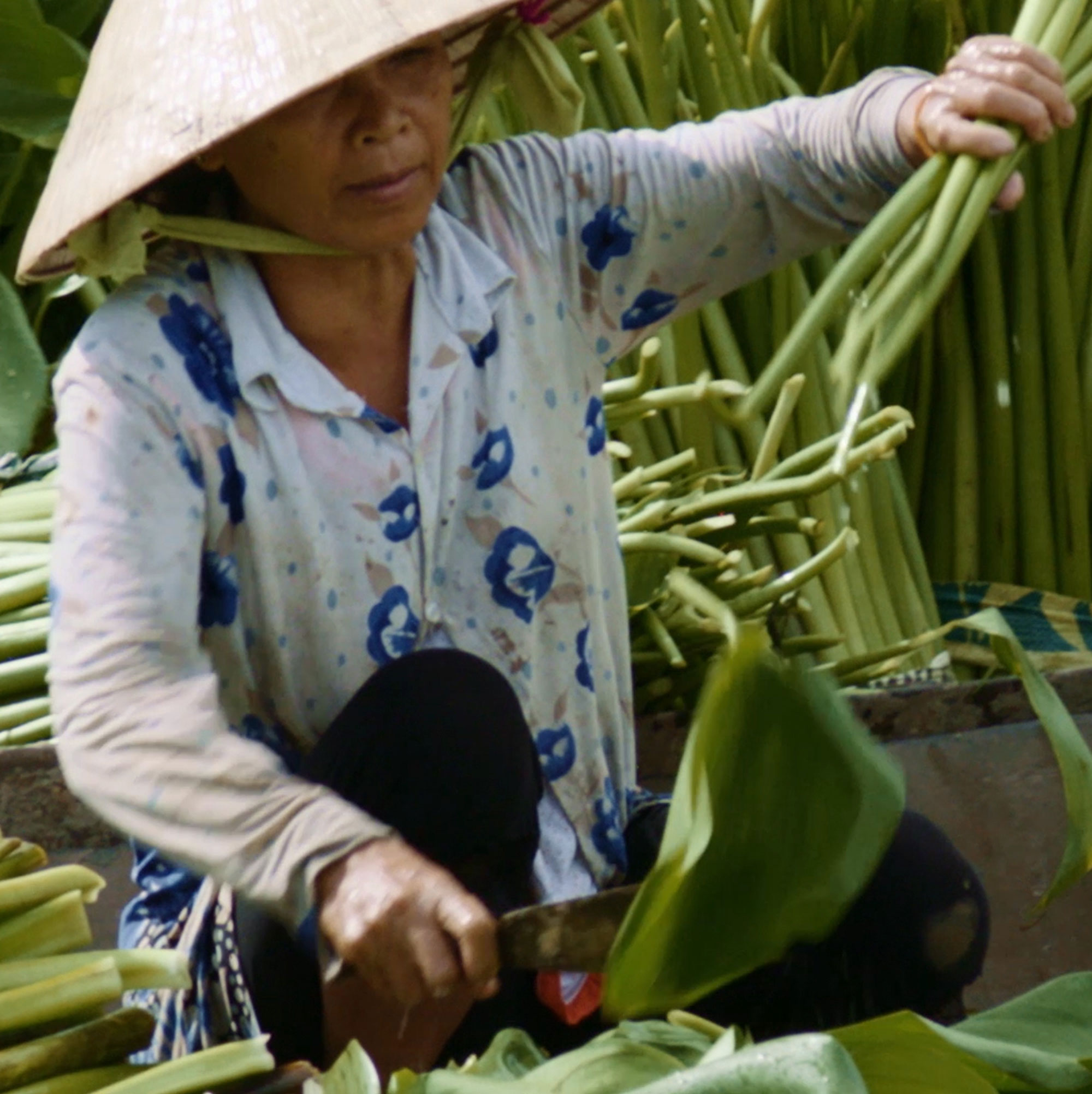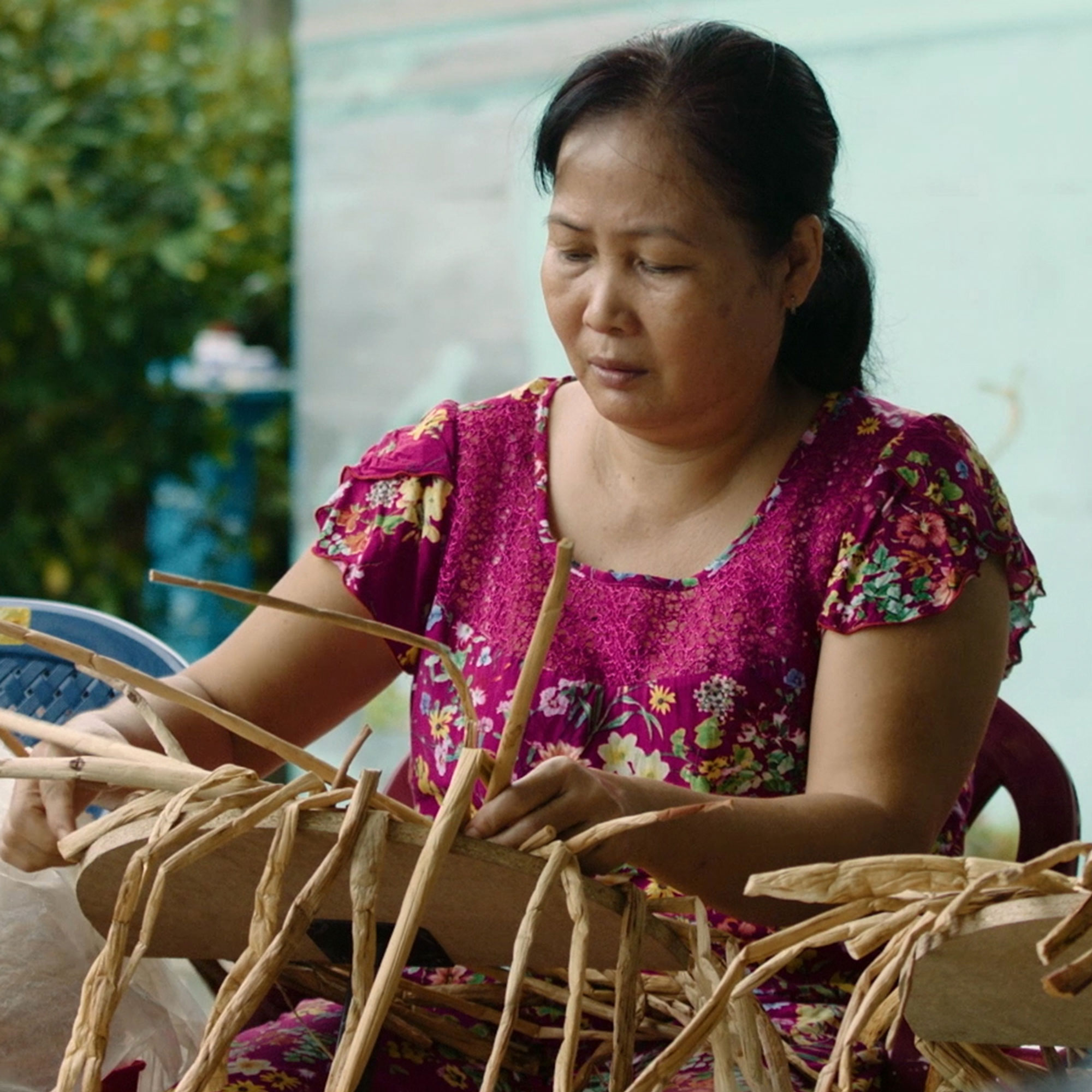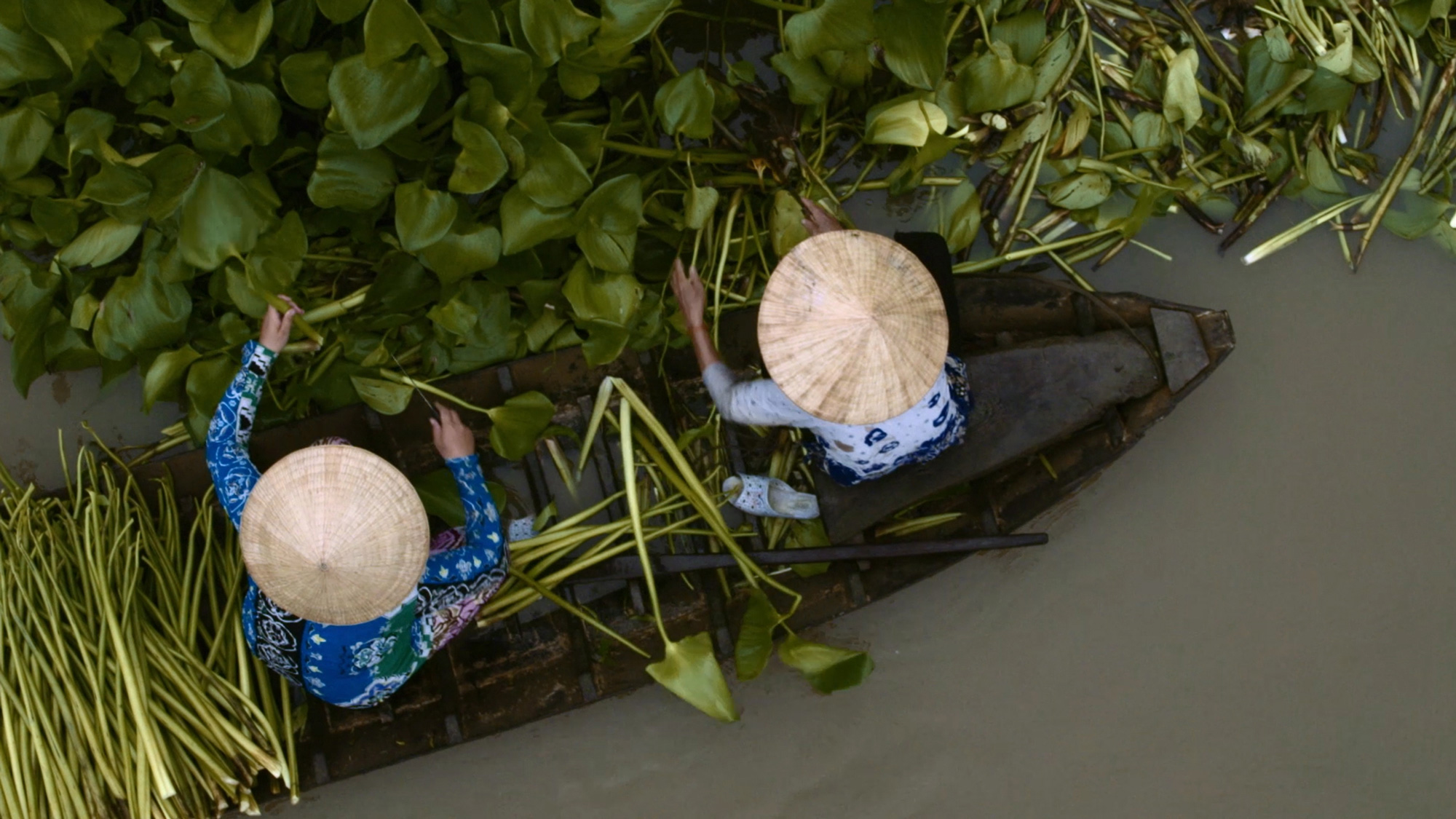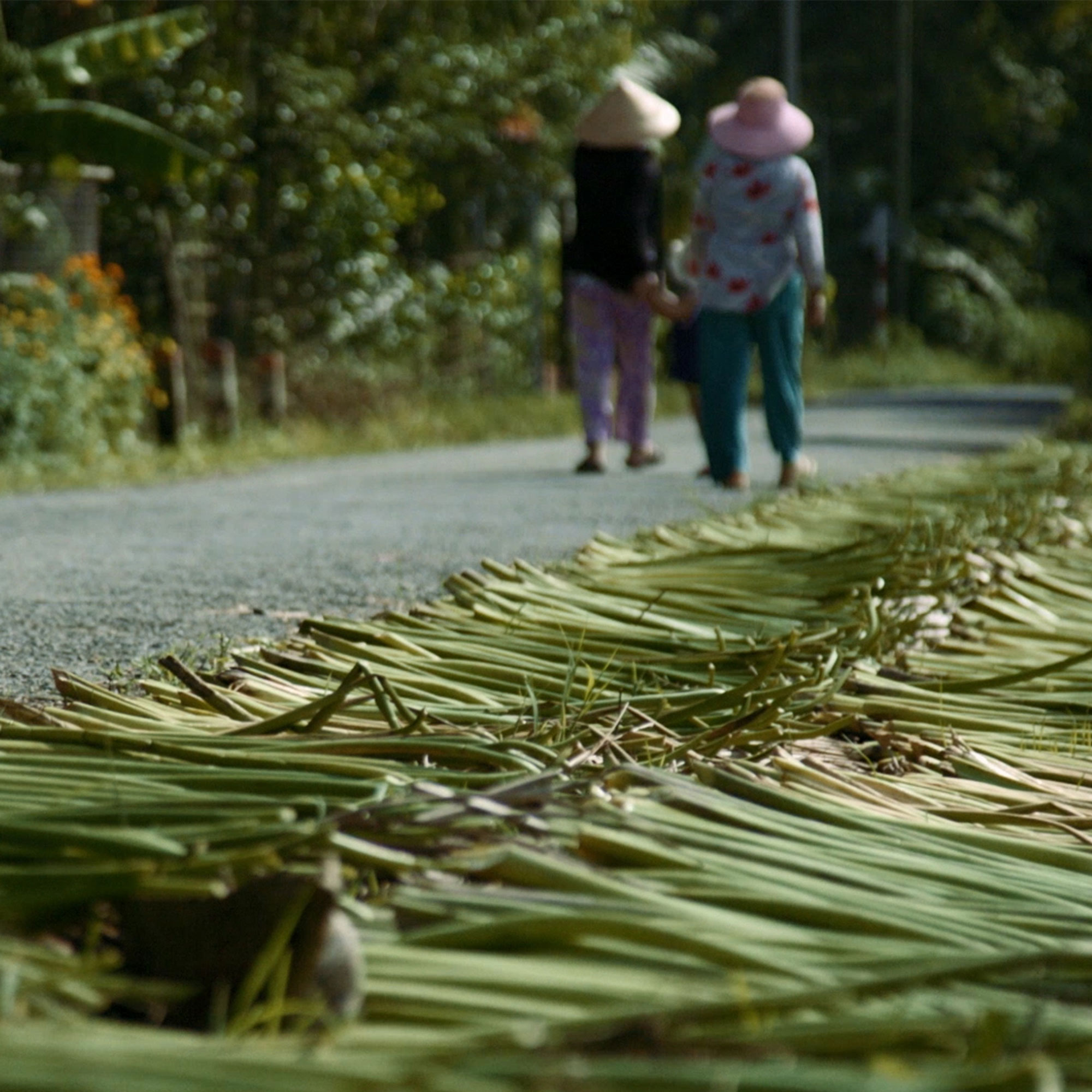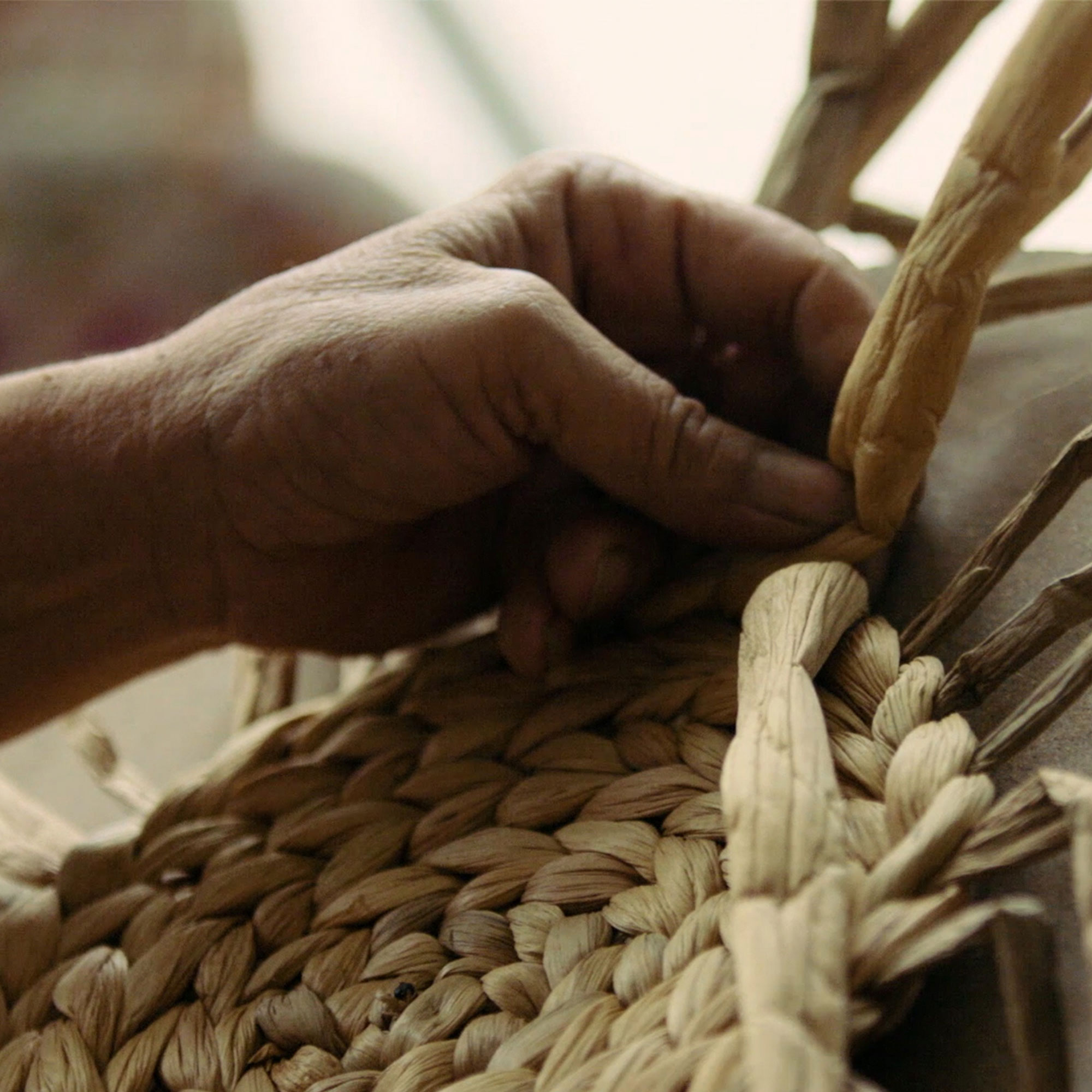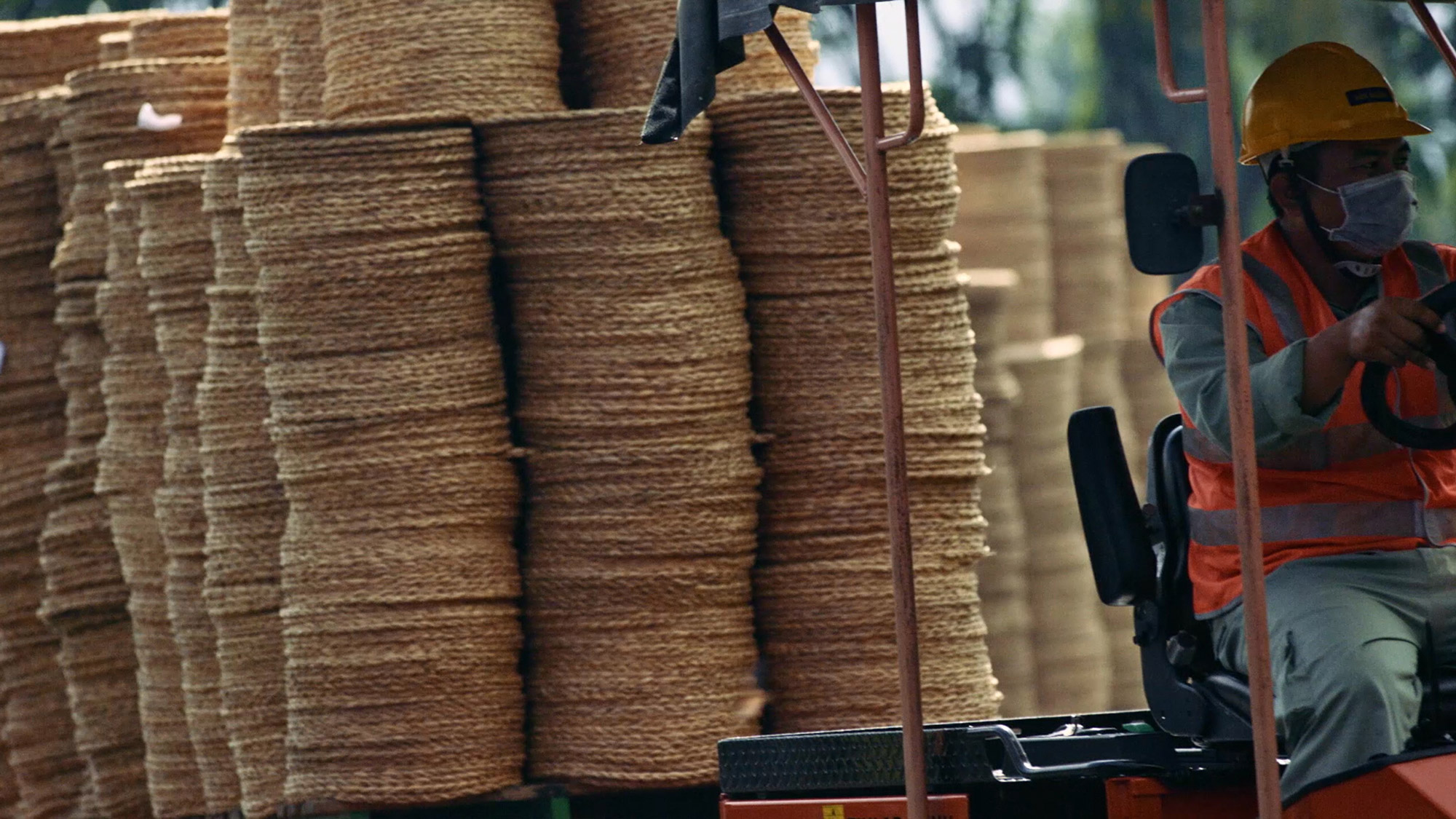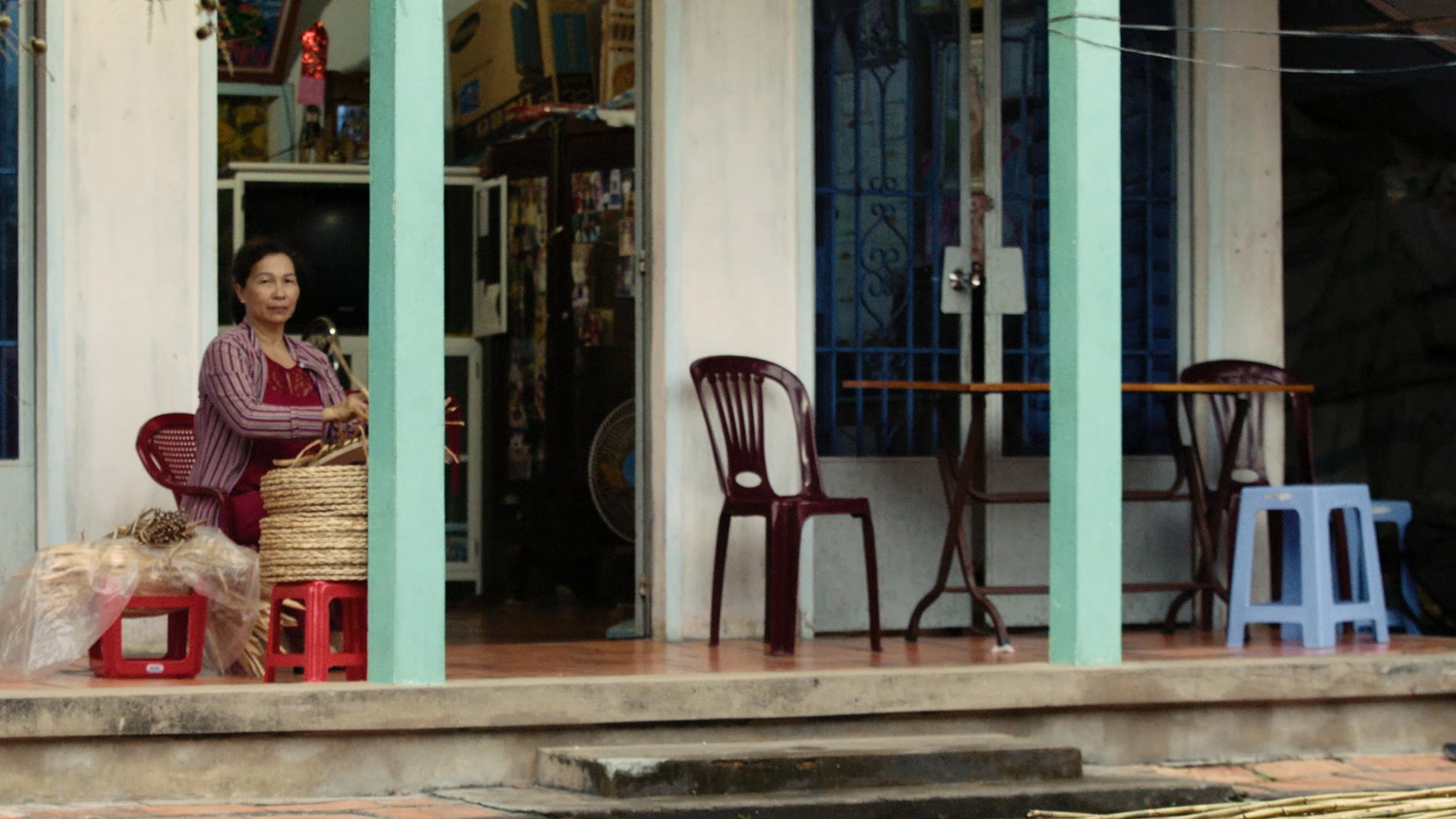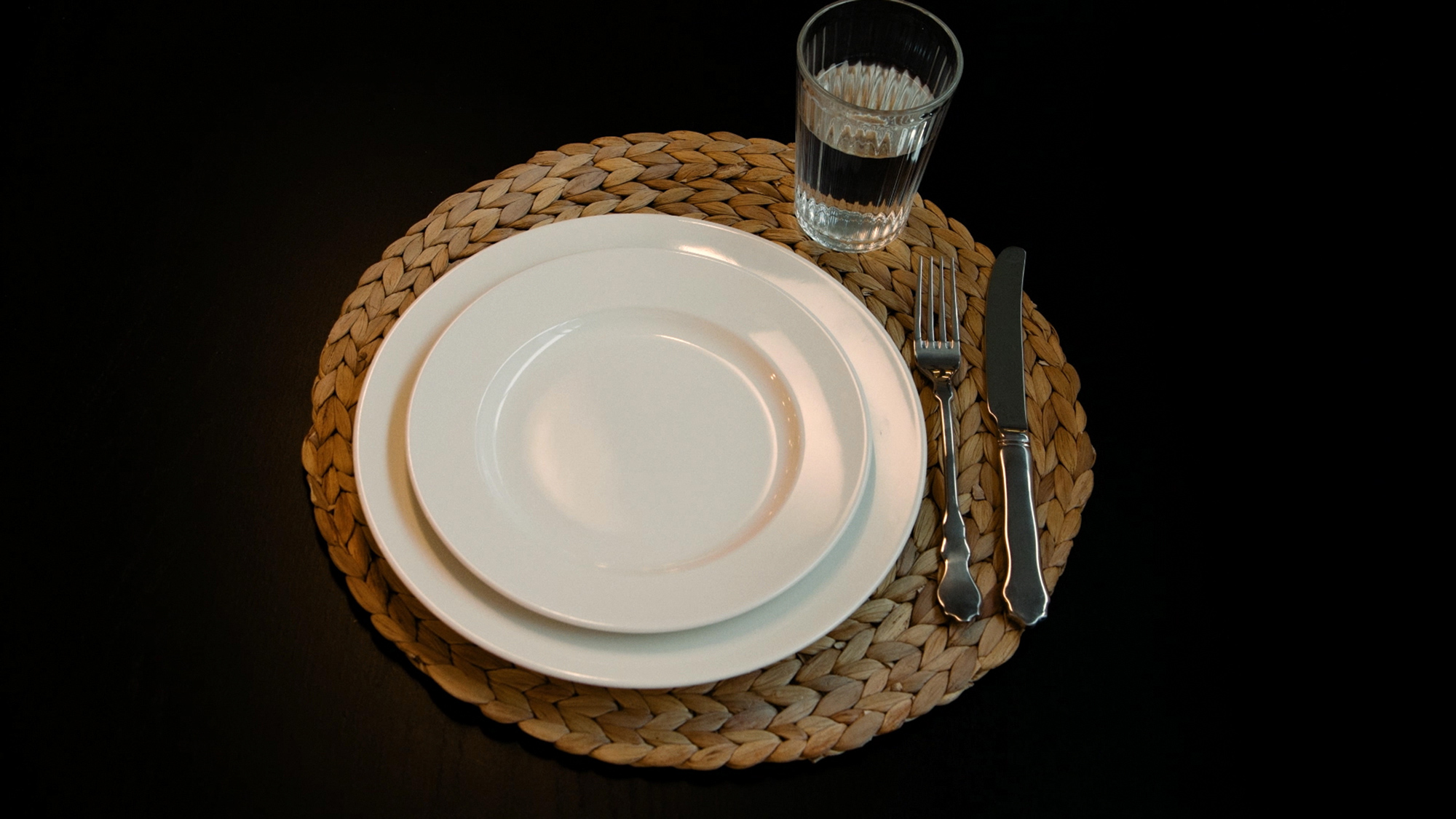Blessing or a curse?
Ariana Pradal • 21.06.2018
The search for sustainable materials is preoccupying both designers and manufacturers. From what raw materials can products be manufactured, which do not leave any carbon footprint as far as possible from the harvest to disposal? Are there even some raw materials, whose use is a blessing?
It’s absolutely beautiful and yet a menace. In its natural environment it cleans the water. However, without any predators it spreads rapidly, overruns the water surfaces and brings the eco-system of lakes and rivers to a standstill. Water hyacinths are free-floating plants with lilac blossom, thick leaves and a stem, which can be harvested and dried to manufacture products.
The plant, which originated in the tropical waters of South America, was exported to other countries because of its beautiful flowers, where it was regarded as a decorative plant for ponds and lakes. However, without any natural predators, a plant doubles in size in about seven days and therefore spreads unbelievably quickly and widely. It clogs up waterways for ships, water flows more slowly and the oxygen content can fall so low that fish and turtles die as a result. Nowadays the water hyacinth is considered to be a menace in many parts of Asia and Africa, whose spread is almost impossible to stop.
Using water hyacinths
Just like other natural fibres from tropical regions, water hyacinths have been used in rural areas to produce small items such as mats or baskets for the local market for decades. The plants are harvested from boats, then the roots, flowers and leaves are cut off and the stems spread out to dry on land. During this process, the stems, which reach a maximum length of 80 centimetres, become their natural brown colour. They are soft and easy to plait. Most items are still made by hand today because the short fibres are not suitable for industrial production. In addition to small flat items, larger products such as sun loungers or chests of drawers are also made from water hyacinths. A frame made of metal or wood is needed for this and the fibres are then plaited around the latter by the skilled workers.
Ikea was one of the first companies worldwide to use water hyacinths on a large scale for producing accessories and furniture in 1996. The plants are harvested and processed for this chiefly in the delta of the Mekong River in Vietnam. Similar to bamboo, the plant grows quickly and as it already grows in water, it doesn’t need to be watered additionally – unlike cotton for example.
A natural raw material with potential? Actually yes. But here’s the catch.
All the companies that use water hyacinths on a large scale, make eco-rubbish out of the natural material. This is because the natural fibre is no longer biodegradable as a result of the materials used during processing, such as acrylic lacquer or polyester. The components of the products can also no longer be separated. The natural raw material has become unusable after it has been made into a napkin holder or basket. However, now the water hyacinth is once again polluting the environment – no longer as a weed, but as waste.
Natural or artificial fibres?
The slogan: «Natural fibres are good, artificial ones bad», is not quite accurate. This is because as the example given above shows, natural fibres are sometimes no longer ecological after they have been processed into finished items. The Managing Director of EPEA Switzerland, Albin Kälin, who is an advocate of closed loop recycling, puts it in a nutshell: «Whether a product degrades biologically without leaving any residues, does not depend on whether it is made of petroleum or a plant, but on its chemical properties. Today we use a wide range of chemical components in almost all industrially manufactured products, which make them more convenient. But they are often poisonous. It takes a lot of work to find better alternatives.»
What do the people on site in the Mekong delta think about using water hyacinths? Trinh ThiLong is the programme coordinator for water projects at the WWF Vietnam and also responsible for the Mekong delta. Her answer to my question: «WWF Vietnam supports the use of this invasive plant as a material for accessories and furniture. This is because water hyacinths disrupt biodiversity. When water hyacinths are used as a material, it helps to stop it spreading further. This means the plant is not stamped out but there is more control over it.» Trinh Thi Long mentions another aspect. From an ecological perspective it makes sense to use a fast-growing plant for production – instead of those that take decades to grow.
In the longer term the aim for all companies must be to develop products which are pollution-free from the outset. They should either be able to be re-used in full at the end of their life cycle or degrade biologically without leaving any residues. Then we will not harm the environment with our economic activity and our consumption. It will still take a few years or perhaps even a few decades until we have reached that stage. But an increasing number of companies are becoming aware of the fact that the economy should move in this direction.
In demand from professionals
Bogna Czeska is responsible for developing new products from natural fibres at Ikea in Sweden. Together with her team she also looks after the manufacture of items made from water hyacinths. In an interview she provides an overview of the current status at Ikea regarding how these natural raw materials are handled.
Why did IKEA start mass producing items for the home made of water hyacinths in 1996?
Bogna Czeska: At that time I was not yet working for Ikea and the beginnings are not well-documented. But what we can say is that we found this material at the time in the Mekong delta in Vietnam. There was a plentiful supply, but it was not being used and therefore had a very low price. There were many advantages in using the material:
• Good products at an affordable price
• Support for people in the Mekong delta through work
• positive effect on the environment, as the plant was constantly being removed.
Even today we are still searching for other natural fibres, which are not yet being used on a large scale for items for the home. During the next few years we will continually be presenting new items made of previously unused, natural raw materials.
Are people in the Mekong delta happy that the invasive water hyacinth, which represents a menace in many places, is being used for production?
BC: During the first ten years people were happy that the plant was being used. Nowadays the situation is different. There are even plantations because the sale of the harvest is good business for the local people.
Then the water hyacinth is not a menace on site?
BC: If water hyacinths cover up to about 50 percent of the surface of an area of water, then they clean the water. However, if the plant covers the majority of an area of water, then the sun can no longer penetrate through the surface of the water. In the long term this leads to the water becoming polluted and fish dying. But in small quantities the plant provides a service. This is why it is sometimes used on fish farms as a natural way of cleaning the water.
Are there any state initiatives or NGOs in the Mekong delta, which deal with the use of water hyacinths?
BC: The Vietnamese state is arranging for waterways to be cleared of water hyacinths so that boats can travel through them. But nothing more is happening at a local level.
Are the products made of water hyacinths, which IKEA sells, 100 % biologically degradable?
BC: No, they are not – yet. In fact, the surface of all the items is treated with a lacquer, which protects them from rotting and against insects. And this lacquer is not biologically degradable. However, it decomposes much more quickly than plastic for example. We are in the process of developing more ecological lacquers with the industry. However, we are not yet where we would like to be.
Last question: The items made so far in IKEA’s collection tend to have quite a traditional feel. Could one also make items with this fibre, which are more contemporary?
BC: Yes of course. The material has certain limits on how it can be used and one has to take them into consideration. But the Gullholmen rocking chair made of banana plant fibres and its modern appearance could easily also be made of water hyacinths.
Photography: A STORY ABOUT EMPOWERING COMMUNITIES BY IKEA
